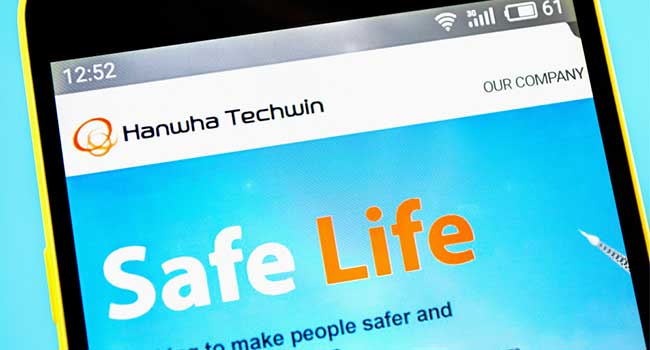
Hanwha is Dropping Huawei Hisilicon from All Their Products
Huawei is subject to the U.S. NDAA government ban and has been 'red flagged' on the United States “entity” list. In addition to cybersecurity concerns, Huawei now faces supply chain barriers that could impact their ability to produce many products such as Hisilicon chips.
- By John Honovich
- Jun 10, 2019
Hanwha Techwin confirmed to IPVM that they are dropping Huawei Hisilicon from all of their products.
Hanwha told IPVM, that “roughly 25% of our current IP camera lineup has an embedded HiSilicon SoC. We are in the process of migrating these IP cameras to Ambarella and our own SoCs. We anticipate 97% of these cameras will be transitioned by the end of this year, while the remainder will be completed by Q1 of 2020."
The exact models were not disclosed, and Hanwha noted this would change month by month as their factory changes over each model (related: Hanwha now has a Vietnam factory).
In general, though, Hanwha has used Huawei in its lower cost models, e.g., here is Hanwha's lowest cost L series camera using a Hisilicon chip.
Replacement Hanwha and Ambarella Chips
Hanwha says they are replacing Huawei with a mixture of their own Wisenet chips and Ambarella chips. Ambarella's CEO called this out in their Q1 investor call. Hanwha Techwin was a HiSilicon customer that transitioned, not only of the CV part, but also on the video product.
Huawei Risks
Huawei is subject to the U.S. NDAA government ban and has been 'red flagged' on the United States “entity” list. In addition to cybersecurity concerns, Huawei now faces supply chain barriers that could impact their ability to produce many products such as Hisilicon chips.
Hanwha's Surging Sales
Hanwha has been the biggest beneficiary of these bans, as the Korean manufacturer has invested heavily in both new product development and sales organization growth at the same time that Dahua and Hikvision have hit these barriers. In particular, Hanwha has done well with projects and larger integrators that desire lower cost products but do not want to risk further association or use of government banned products. The use of Huawei was the most obvious risk for Hanwha and dropping them will eliminate that. The biggest question will be the financial impact as Huawei's chips have been the lowest cost option on the market.
About the Author
John Honovich is the founder of IP Video Market Info.